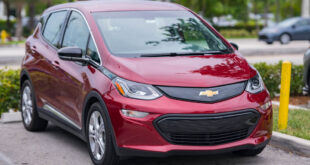Electric Car Motor Technology: Advancements and Insights Electric car motor technology is revolutionizing the way we think about sustainable transportation. As more automakers shift towards eco-friendly solutions, understanding the technology behind electric motors is crucial for both consumers and enthusiasts. This article dives deep into the innovations, types, and workings of electric car motors while addressing common questions and providing practical tips.
What is Electric Car Motor Technology?
Electric car motor technology refers to the systems and components that power electric vehicles (EVs). Unlike traditional internal combustion engines (ICE), electric motors rely on electricity stored in batteries to generate motion. This shift from fuel-based systems significantly reduces carbon emissions and improves energy efficiency.
How Electric Car Motors Work
Electric motors convert electrical energy into mechanical energy through electromagnetic principles. Here’s a simplified breakdown:
- Energy Flow: Batteries supply electricity to the motor through an inverter.
- Magnetic Fields: The electric current creates magnetic fields that rotate the motor’s rotor.
- Motion Output: This rotation generates torque, propelling the vehicle.
Types of Electric Motors in Cars
- DC Motors: Simple and efficient, commonly found in older models.
- AC Induction Motors: Offer high performance and durability.
- Permanent Magnet Synchronous Motors (PMSM): Known for their compact size and high power output.
- Brushless DC Motors (BLDC): Low maintenance and highly efficient.
Key Components of Electric Car Motor Technology
- Battery Pack: Stores energy to power the motor.
- Inverter: Converts DC from the battery into AC for the motor.
- Controller: Manages the motor’s speed and torque.
- Cooling System: Prevents overheating during operation.
Advantages of Electric Car Motors
- Eco-Friendly: Zero emissions reduce the carbon footprint.
- Cost-Effective: Lower operating and maintenance costs.
- Performance: Instant torque for better acceleration.
- Energy Efficiency: Higher efficiency compared to ICE engines.
Challenges in Electric Motor Technology
- Battery Limitations: Range anxiety and charging infrastructure remain issues.
- High Initial Costs: EVs are often more expensive upfront.
- Recycling Concerns: Managing motor and battery waste sustainably.
Latest Innovations in Electric Car Motors
- Solid-State Batteries: Enhanced energy density and faster charging.
- Axial Flux Motors: Compact design with high power output.
- Integrated Powertrains: Combining the motor, inverter, and transmission into one unit.
- Wireless Charging: Simplifies the charging process for EVs.
10 Tips for Maximizing Electric Motor Performance
- Regularly check the battery health.
- Use regenerative braking to extend battery life.
- Maintain optimal tire pressure for efficiency.
- Avoid frequent rapid accelerations.
- Park in shaded areas to prevent battery overheating.
- Update your car’s software for performance improvements.
- Use eco-driving modes when possible.
- Schedule regular motor and system maintenance.
- Invest in high-quality charging equipment.
- Plan trips to avoid range anxiety.
10 FAQs About Electric Car Motor Technology
- What is the lifespan of an electric motor?
Most EV motors last over 10 years or 1,000,000 miles with proper maintenance. - Do electric motors require maintenance?
They are low-maintenance but require occasional inspections for optimal performance. - Can I retrofit an electric motor into a regular car?
Yes, but it involves significant modifications and costs. - What’s the difference between AC and DC motors?
AC motors are more efficient and common in modern EVs, while DC motors are simpler and less expensive. - Do electric cars perform well in cold weather?
Cold temperatures can reduce battery efficiency, impacting motor performance. - What is regenerative braking?
A system that converts braking energy back into electricity for the battery. - How do EV motors compare to traditional engines?
They provide instant torque, are quieter, and more efficient. - What are the future trends in electric motor technology?
Expect improvements in motor efficiency, integration, and eco-friendly materials. - Are there different motors for hybrid cars?
Yes, hybrids often use smaller motors paired with ICEs. - How safe are electric car motors?
Extremely safe, thanks to robust insulation and advanced monitoring systems.
Conclusion
Electric car motor technology is at the forefront of the automotive revolution, offering cleaner, more efficient solutions for transportation. The advancements in motor design, battery integration, and performance have made EVs a viable alternative to traditional vehicles. As innovation continues, the future of electric motors looks promising.
Investing in an EV not only benefits the environment but also delivers long-term savings and cutting-edge performance. Understanding the fundamentals of electric car motors equips consumers with the knowledge to make informed decisions in this rapidly evolving market.
 oto car insurance used car repair
oto car insurance used car repair
